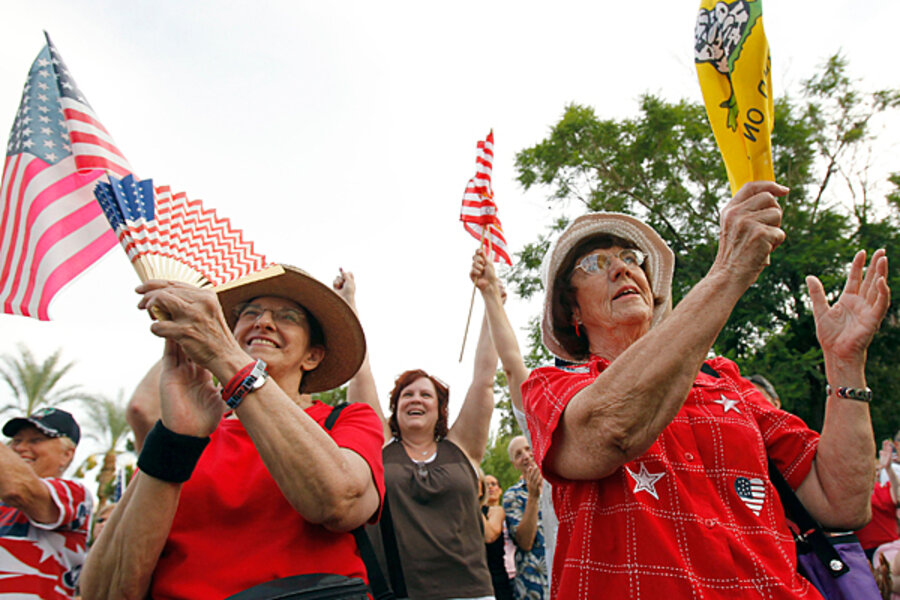How Arizona became ground zero for immigration reform
Loading...
| Los Angeles
Arizona has become the country’s laboratory for immigration reform.
New laws coming out of the state have made it a staging area for a national debate – and a federal-state court battle – over whether the states or federal government should control immigration.
Arizona's immigration teapot seemed to boil over in April, with the passage of the nation’s toughest immigration bill, SB 1070. But the fire was lit much earlier, say historians and sociologists.
IN PICTURES: SB1070: Arizona immigration law protests
It was Operation Blockade in El Paso (1993) and Operation Gatekeeper in San Diego (1994) which closed off what had been the two busiest sectors for undocumented migration, “accounting for at least three quarters of the traffic,” says Doug Massey, a professor of sociology and public affairs at Princeton University. “This diverted the flows through the Sonoran desert into Arizona, which until then had been a quiet backwater both with respect to border crossing and immigration settlement,” he says.
Suddenly thousands of people were traversing the state and because this diversion coincided with the construction boom in Phoenix, many settled there to take jobs. Mr. Massey notes that the crossing of thousands of Mexicans between Tijuana and San Diego or Juarez and El Paso is not particularly visible given that both areas have millions of people and the US-side cities are heavily Mexican to begin with.
“But tens of thousands of Mexicans showing up in Douglas, Arizona and crossing open ranch land make a big impression,” he says, “making illegal migration much more visible and of course quite disruptive to local ranchers.”
Yet Arizona's current immigration drama may not owe its entire existence to history or demographics. Republican politics play a role too, says Aarti Kohli, Director of Immigration Policy at the Chief Justice Earl Warren Institute on Race, Ethnicity at UC Berkeley School of Law.
“The data is clear that [Gov. Jan] Brewer’s job approval ratings did jump compared to when she was struggling before SB 1070 was signed," says Ms. Kohli.
Arizona's restrictive bent on immigration goes back at least to the 1960s, says Jack Pitney, a political scientist at Claremont McKenna College. This is, after all, the home of five-term US Sen. Barry Goldwater – "Mr. Conservative" – the politician most often credited for sparking the resurgence of the American conservative political movement in the 1960s.
“Arizona has always had a contrarian, cantankerous streak,” says Mr. Pitney. It has to do with demographics. In recent decades, Mexicans from the South have migrated here and have run into the shift of American population from the Northeast rust belt to the Southwest Sun Belt – largely older whites.
The current focus on immigration in Arizona shows an ignorance of where the US has been, says Deborah Kang, a post doctoral history fellow at the University of California, Berkeley.
“What always surprises me about these debates is how quickly we forget," she says. "Some in the media have reported that SB 1070 marks a new high-water mark for anti-Mexican sentiment in the United States and a new precedent in the history of American immigration law.”
But she says Mexican immigrants have been repeatedly scapegoated for the nation's economic woes. Individuals of Mexican descent, whether undocumented immigrants, legal residents, or even US citizens, were forcibly removed from the US in deportation campaigns in the early 1920s, 1930s, and 1950s – all in the midst of a national economic downturn or crisis.
“I see SB 1070 … as another version of this cycle – a cycle in which we welcome undocumented workers in the good times but demand their removal in bad times,” says Dr. Kang.
IN PICTURES: SB1070: Arizona immigration law protests
Related:





